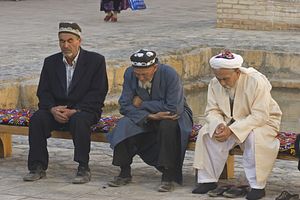The ongoing argument between two formerly friendly, famed French scholars of radical Islam Gilles Kepel and Olivier Roy has deep implications not just in Europe and the Middle East, but Central Asia as well. The two, as discussed in a recent New York Times article, have divergent views on just what radical Islam is, how it developed, and what its future may be.
From the NYT:
Mr. Kepel, 61, a professor at Sciences Po, the prestigious political science institute, finds much of the answer inside France — in its suburbs and their dysfunctional sociology — and in the role of Islam, angering many on the left.
Mr. Roy, 66, who as a bearded young man roamed Afghanistan with the mujahedeen in the 1980s and now teaches at the European University Institute in Florence, Italy, places greater emphasis on individual behavior and psychology in a jihadism he considers strictly marginal to Islam.
Perhaps one source of the divergence in opinion between the two is that while both have broadly dealt with issues of Islam and radicalization–and have commented extensively on these issues with regard to Europe in recent months–when it comes to regions Kepel focuses on the Arab world and Roy on Afghanistan and Central Asia.
Kepel, the NYT notes, “sees individuals as cogs in a system — part of a classically French, structuralist tradition that minimizes the role of individual human agency;” meanwhile, Roy “sees mostly troubled people in the jihadist ranks who act out their fantasies of violence and cruelty.”
The history of Islam, how it interacted with political development in particular, differs between the Arab world and Central Asia; that difference may begin to explain the roots of the divergence between Kepel and Roy. In Central Asia, 70 years of atheist Soviet rule did not destroy Islam but drew a firmer line between the personal and the public expressions of religious piety. Since independence, Central Asians have been able to reclaim a degree of their Islamic heritage, but it’s made Soviet-trained autocrats extensively nervous. With one eye on the Arab world, the leaders of many Central Asian countries have viewed with suspicion the rise in public piety.
Distilled, the question at the heart of this debate is whether Islam itself is the problem. Julia Ioffe addressed this in an article last month for Foreign Policy. The title said it all, “If Islam Is a Religion of Violence, So Is Christianity.” Ioffe’s argument falls into Team Roy territory, arguing that all world religions have histories of bloodshed and singling out Islam is inane.
This debate matters because the prevailing analysis will help policymakers around the world deal with terrorism. Also as noted in the NYT, this is reflected in the United States via criticism of President Barack Obama’s reluctance to use the exact words “radical Islam.”
From the NYT:
The terrorists who have carried out recent attacks were mostly marginalized young men and petty criminals, [Roy] says, adding that they have used Islam as a cover to pursue extreme violence.
“They haven’t had a militant past,” Mr. Roy said of many of these terrorists, in a telephone interview. The problem they represent, he says, is the “Islamicization of radicalism.”
It is a signature phrase that enrages Mr. Kepel, who leans toward its opposite: the radicalization of Islam.
If the problem lies, as Kepel contends, in the radicalization of Islam, then Islam itself has become the root problem. If, as Roy argues, the issue is the Islamicization of radicalism, then radicalism is the problem, overlaid with Islamic flourishes. This difference–annoyingly subtle as it is–dictates policy after a fashion. If the core issue is an unintegrated Muslim community, one set of policy options make sense. If the core issue is many different individual motivations, a different set of policy options toward the larger Muslim community makes sense.
In Central Asia’s capitals, I suspect Kepel would have fans. The fear with which Central Asian leaders have approached the growth of Islam in the region and the reaction to those who practice Islam outside the state’s control is telling. A particularly good case study is Tajikistan. The country’s population is predominantly Muslim but the state still has some of the strictest controls on religion and political activities of religious communities. This awkward arrangement (a state oppressing the majority religion is nothing if not awkward) points to an underlying suspicion that Islam itself has been radicalized and is thus the root of the problem.
Roy’s perspective, on the other hand, would likely encourage a closer look at the actual individuals who engage in terrorism and the economic and social factors that lead them to awful ends. This line of thought would seek to address with policy issues of inclusiveness in both a social and political sense, and deal with issues of economic inequality that feed grievances toward other segments of society or the state itself.
Many analysts (myself included) have argued that Central Asian state policies with regard to terrorism are, at best, counterproductive. Again taking Tajikistan as the example, the removal of the Islamic Renaissance Party (IRPT) as a legitimate political player robbed the country’s more pious citizens of a political outlet. Given that the IRPT, in its modern iteration, never proposed restrictive policies and even backed a secular female candidate for president in 2013, it seems woefully shortsighted to sideline them.

































